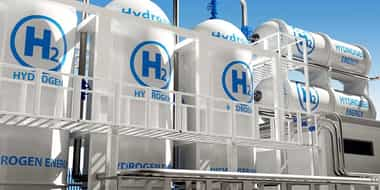
Mar 29, 2022
Blog Energy & Sustainability Carbon Capture | What it is & why we care
In our recent report on carbon capture, our analysts explore the current market trends of the Carbon Capture, Utilization and Storage (CCUS) technologies market.
For the forecast period 2021-2025, the global carbon capture, utilization and storage (CCUS) technologies market should reach $5.2 billion by 2025, a compound annual growth rate (CAGR) of 15%.
Why should we care about? CCUS technologies
Carbon capture, utilization and storage technologies offer considerable strategic value in the transition to net-zero emissions:
A Brief overview of the Carbon industry
The sequestration of CO2 is recognized as one of the most promising options for mitigating the increase of CO2 emissions, therefore limiting the onslaught of global warming.
CO2 sequestration is defined as the segregation of CO2, either chemically, as in chemical utilization, or physically, as in geologic storage. While in the past, focus has been on the geologic storage of CO2, the utilization of CO2 is now being proposed as a possible alternative. As a result, the name of the entire process has become Carbon Capture, Utilization and Storage (CCUS).
Major CCUS initiatives involve the integrated implementation of the following processes:
While the need to develop expertise in the geological storage of CO2 is recognized, incentives from governments are needed, due to the considerable investment required. Increasingly, the use of CO2 for enhanced oil recovery is considered means for advancing the deployment of large-scale CO2 storage products.
With the development of new technologies, new applications for CO2 are emerging. These could potentially reduce CO2 emissions, both by replacing fossil-based products and sequestrating CO2.
Climate policies and regulation
Historically, industrialized countries have emitted the majority of greenhouse gases. However, more recently, emissions from developing countries have surpassed those of industrialized countries and are rising rapidly.
For example, in 2008, China became the world’s largest CO2 emitter, and during the nine years from 2010, greenhouse gas emissions grew by 1.3% each year on average. For the period 2020-2025, global CO2 emissions are expected to grow on average by 1.5% annually.
During the pandemic, global carbon emissions dropped by 5-6%, but are rapidly rising once more.
To shift towards a low-carbon world, mitigation measures need to be accelerated and complemented by comprehensive and concerted efforts worldwide. Yet, according to the World Bank (2019) out of the 22 major emitters that submitted an international pledge to reduce emissions, only India, the EU and Brazil are likely to meet those goals.
Let’s look at investment across the CCUS space
Over the last decade, around $15 billion capital has been invested in 15 large-scale CCUS projects. This capital investment is supported by approximately $2.8 billion in public grant funding. What’s more, in 2020, governments across different countries announced more than $25 billion in CCUS projects and programs.
While considerable research and development efforts are being made to develop new pathways for converting CO2 to useful products, emerging applications are still being tested at either laboratory or pilot scale. That being said, there are Chinese companies that have already started to commercialize CO2 -based polymers, overtaking Western companies that have been focused on extensive research in this field for a while now.
Yet, despite the many developments being made, CCUS technology has not reached its optimum level. While importance in terms of supporting organizations and governments reach climate goals was recognized long ago, the deployment of CCUS technology has been slow. Investment in CCUS globally has been consistently accounted for less than 0.5% of the total global investment in clean energy and efficiency technologies.
Although a great deal of investment has been made across the power sector, CCUS investments in the industrial sector are lacking. Despite significant activity in some industrial areas, notably gas processing, CCUS projects in a number of key industrial sectors are less developed. Projects in the power sector and industrial processes jointly accounted for more than 80% of the 2020 CCUS market.
If you’re interested in Carbon Capture, Utilization & Storage Technologies, make sure to take a look at BCC Research’s extensive library for reports like this and more.
Have you thought about becoming a member? There has never been a better time to do so. Get in touch with the team today.

Electrical switches—devices that control the flow of electricity—are the backbon...

As the world accelerates toward net-zero emissions, hydrogen, and ammonia have e...

Hydrogen technology is widely used across industries like glass, fertilizer, met...

We are your trusted research partner, providing actionable insights and custom consulting across life sciences, advanced materials, and technology. Allow BCC Research to nurture your smartest business decisions today, tomorrow, and beyond.
Contact UsBCC Research provides objective, unbiased measurement and assessment of market opportunities with detailed market research reports. Our experienced industry analysts assess growth opportunities, market sizing, technologies, applications, supply chains and companies with the singular goal of helping you make informed business decisions, free of noise and hype.